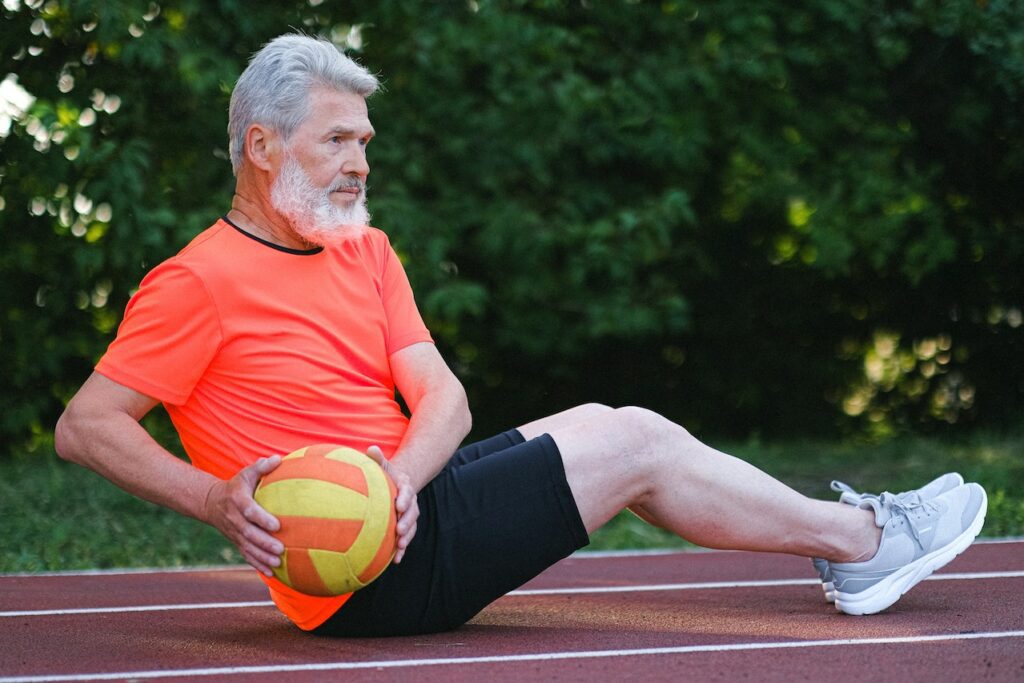Best cardio workouts for seniors: which one suits you best?
Welcome to an article that’s close to my heart – both figuratively and literally! As a senior, my doctor told me, “Cardiovascular exercise is crucial for your health.” The hitch was that I had no notion where to start. Cardio for seniors is seldom mentioned, putting many of us in the dark about how to appropriately integrate it into our lives, particularly while managing health concerns.
This knowledge gap drove me on a discovery adventure. I wanted safe, effective, and fun cardio activities for my age. As I dug further, the terrain was more complicated than I expected. Understanding the limits of specific health issues and identifying workouts that would assist me without putting my health at danger were new to me.
This personal experience highlighted a larger issue: many seniors are recommended to conduct aerobic activities for their health, but the route to doing so safely and successfully is unclear. It’s about making educated decisions that fit our health profiles, not simply starting any workout.
This article was necessary because of it. It’s not only a guide; it leads to knowledge and action. This article discusses cardiac routines that are good for seniors, taking into account our health issues.
Join me as we explore senior cardio. With my studies and personal experiences, I’m delighted to share my health, self-discovery, and empowerment journey with you. Let’s make our elderly years vibrant together.

Which seniors can’t perform cardio?
Cardio is great, but everything has limits. Seniors should know their boundaries very well to avoid any potential physical damage. Thus, below are several illnesses that may prohibit cardiac workouts:
Advanced Respiratory Issues
- Like severe COPD or advanced asthma.
- Can affect breathing during a workout, requiring less effort.
Neurological Issues
- Like advanced Parkinson’s or severe MS.
- May affect balance, coordination, and muscular control, requiring cautious training.
Joint and Bone Issues
- Extreme osteoporosis or arthritis.
- Low-impact workouts are best to avoid fractures and joint discomfort.
Significant Balance Issues or Fall History
- Rapid movement or balancing exercises increase fall and injury risks.
If you fall into any of the categories mentioned above, don’t despair! You can still do the lightest, simplest form of cardio known to man: walking. In fact, I have an in-depth article that explains the benefits of plain walking for seniors: Can One Walk a Day Keep the Doctor Away? Reasons and Studies Explained
Now that’s settled, let’s get into the best cardio workouts for seniors!
Aqua aerobics and swimming
Swimming and water aerobics are ideal cardio workouts for seniors with arthritis or joint issues. Picture yourself flowing across the water, each stroke a soothing yet effective workout free from land-based stresses. This is a peaceful, even contemplative pastime where the water’s buoyancy aids fitness and wellness.
Swimming is great for heart health, especially for those suffering from joint problems. Water supports our weight, relieving joint stress and enabling full, pain-free exercise. Water resistance develops muscles and supports joints. The American Journal of Physical Medicine & Rehabilitation found that water-based activities increase joint usage and lessen arthritis discomfort.
Water aerobics, on the other hand, mixes group exercise with water therapy. These sessions are safe and helpful for cardiovascular health since they may be customized. Walking to more intense aerobic programs is meant to improve heart health while being mild on the joints.
Bonus Tip: Use water dumbbells or resistance bands to increase your water exercise. These items may provide resistance and variation to your water workouts while keeping them joint-friendly.
Swimming and water aerobics are fun and a workout. Swimming laps alone or taking a water aerobics class together shows how our exercise routines might change as we age. They show that heart and joint care can be fun and beneficial.
Static cycling
Many seniors, including yourself, may first avoid riding due to mobility or joint issues. Stationary cycling is unexpectedly effective and safe for older persons, especially as a low-impact cardio workout. It provides the advantages of riding without the hazards of outdoor biking.
Stationary cycling improves cardiovascular health without straining joints. Unlike high-impact workouts, it raises your heart rate without straining your knees, hips, and back. This makes it helpful for arthritis and other joint disorders. Stationary cycling may increase joint flexibility and decrease discomfort in osteoarthritis patients, according to a Journal of Rheumatology research.
Proper bike setup maximizes stationary riding and reduces strain and injury. Adjust the seat height so that your knee is slightly bent when the pedal is lowest when you sit on the bike. This posture prevents knee overextension. Adjusting the handlebar height reduces back and hip stress by allowing you to reach them without hunching.
Creative Idea: Place the bike in front of a TV or window to make stationary riding more interesting. Watch your favorite programs, enjoy the outdoors, or join a virtual cycling class to keep your routine fresh and encouraging.
Stationary cycling strengthens joint muscles and improves cardiovascular health. This exercise may be modified to your fitness level, starting with shorter, low-intensity sessions and increasing as your endurance increases.

Dance/light aerobics classes
Are you ready to spice up your cardio? You may love light aerobics and dancing lessons! These senior-specific programs emphasize enjoyment and exercise. It’s more than exercise—it’s a celebration of what our bodies can achieve to upbeat music.
Imagine entering a dancing class with music blasting and seniors ready to move. Not flawless movements or keeping up with expert dancers in these lessons. They’re about dancing, laughing, and enjoying the music. Best part? Low-impact activities make these workouts easy on your joints yet great for cardio.
Light aerobics lessons are fun too. Imagine an energetic room with senior-friendly lecturers. They’ll lead you through safe, comfortable exercises to raise your heart rate and endurance. These sessions use amusing props like lightweight dumbbells or resistance bands to challenge without overdoing it.
Fun Tip: Bring a companion for a social event. These lessons are more enjoyable and motivating when taken with a friend. It’s also a terrific opportunity to meet active, healthy buddies.
These sessions are great since they can be tailored to your fitness level. You may always try another movement if one doesn’t seem right. Maintaining momentum, smiling, and enjoying the ride is crucial.
Rowing
Rowing may not be the initial aerobic training for seniors, particularly those with arthritis or joint issues. Rowing involves particular equipment and, preferably, a rowing machine or club, which may not be available to everyone. For those who have access to a gym, community center, or rowing club, it provides a great low-impact, high-reward cardio exercise.
Rowing is a great cardiovascular workout without stressing your joints. In a boat, rowing’s smooth motion and resistance from the rowing machine or water make it beautiful. This resistance helps increase cardiovascular endurance and strengthens joint-supporting muscles. The American Journal of Preventive Medicine found that rowing activities promote cardiovascular health, especially in older persons.
Let’s speak about technique since rowing requires an appropriate form to optimize benefits and reduce joint tension. Remember these tips:
- Posture Matters: Sit up straight and don’t droop. Good posture protects your back and joints by engaging the correct muscles.
- When rowing, push with your legs first, then your arms. This routine uses stronger leg muscles to lessen arm and back strain.
- Try smooth, continuous motion instead of choppy. Consider the rowing stroke a loop rather than parts.
- Don’t Overreach: Lean forward at the start of each stroke to your comfort level. Back pain might result from overreaching.
- Controlled Speed: Move steadily. Rowing consistency is more important than speed.














